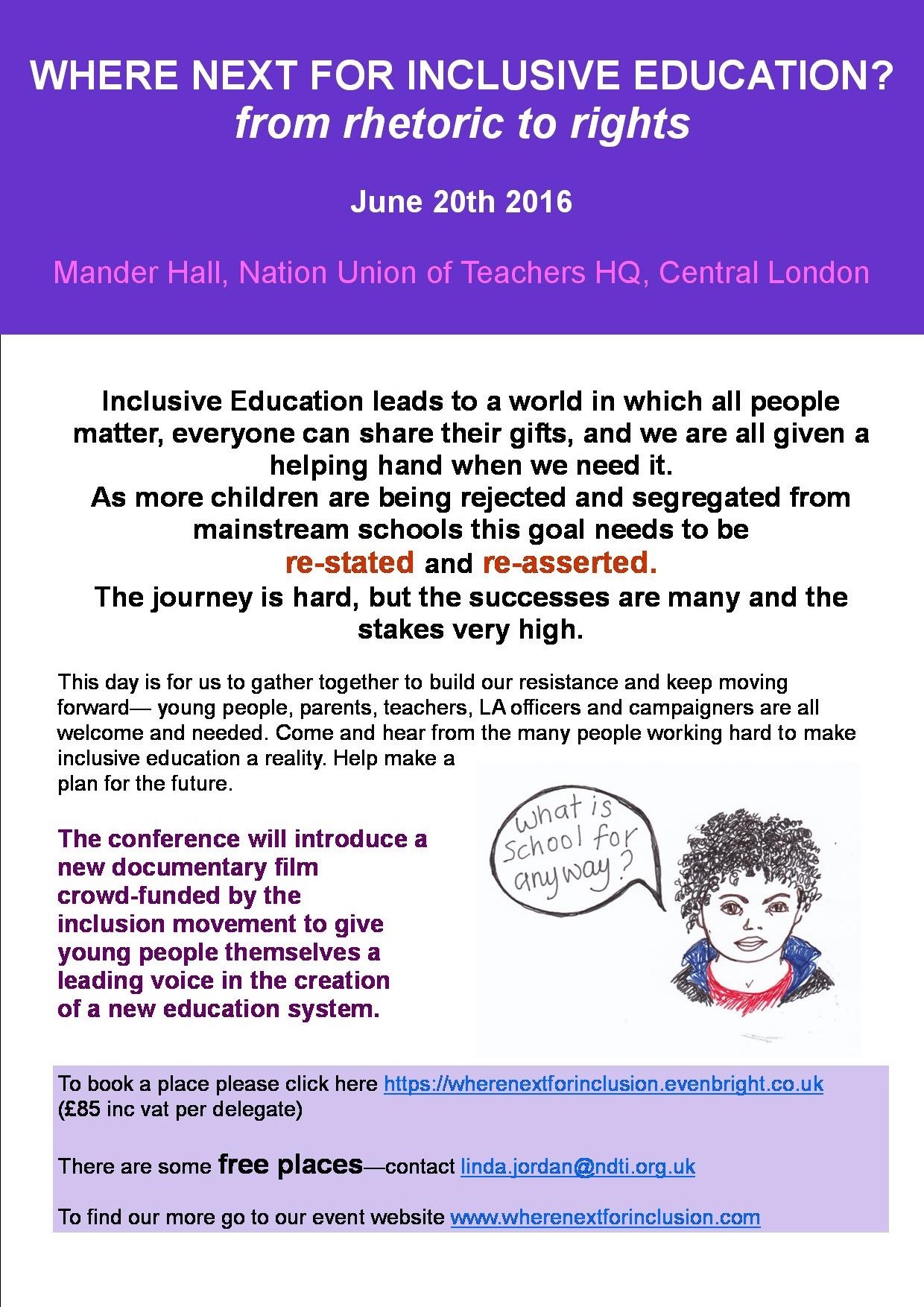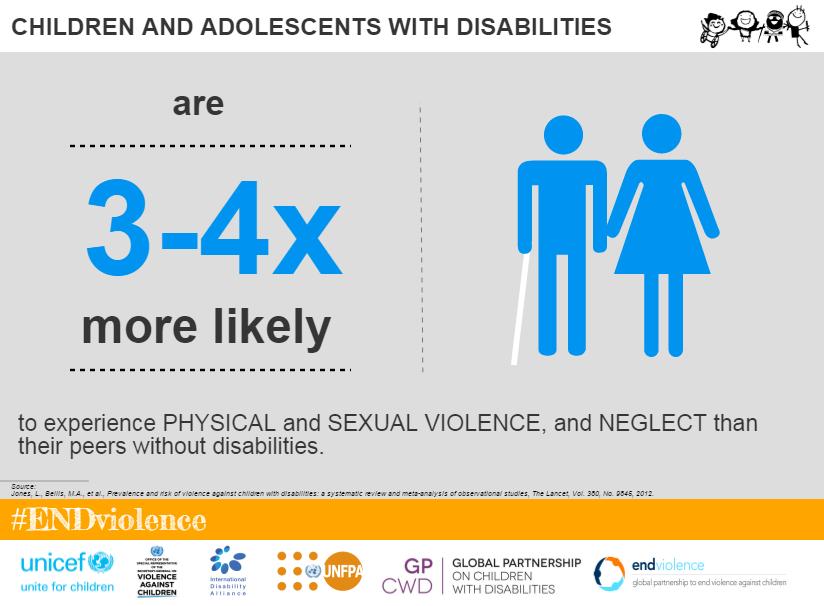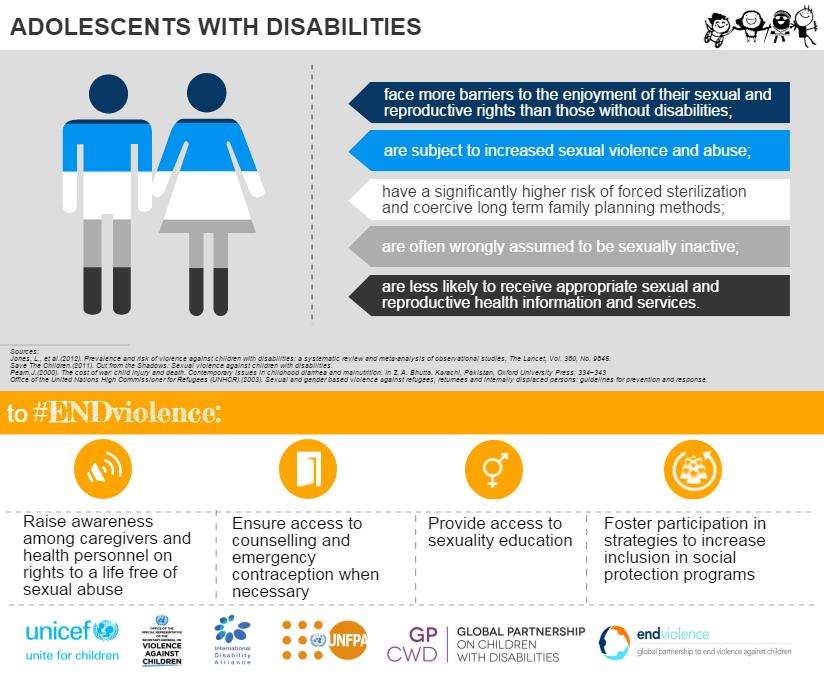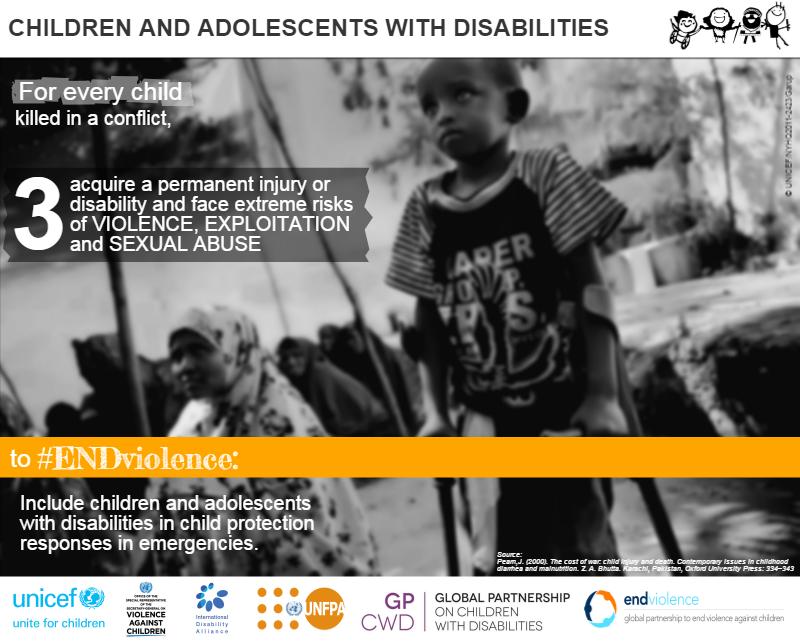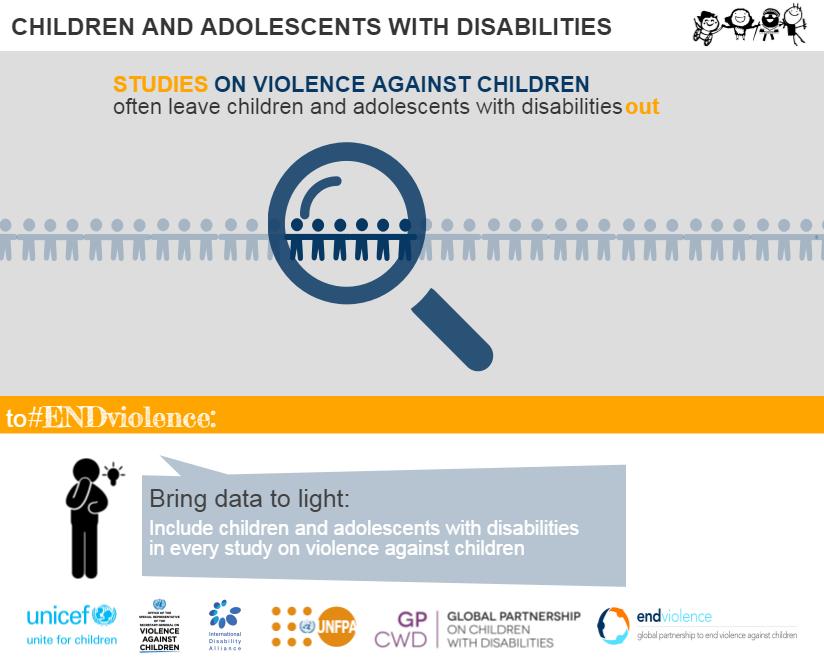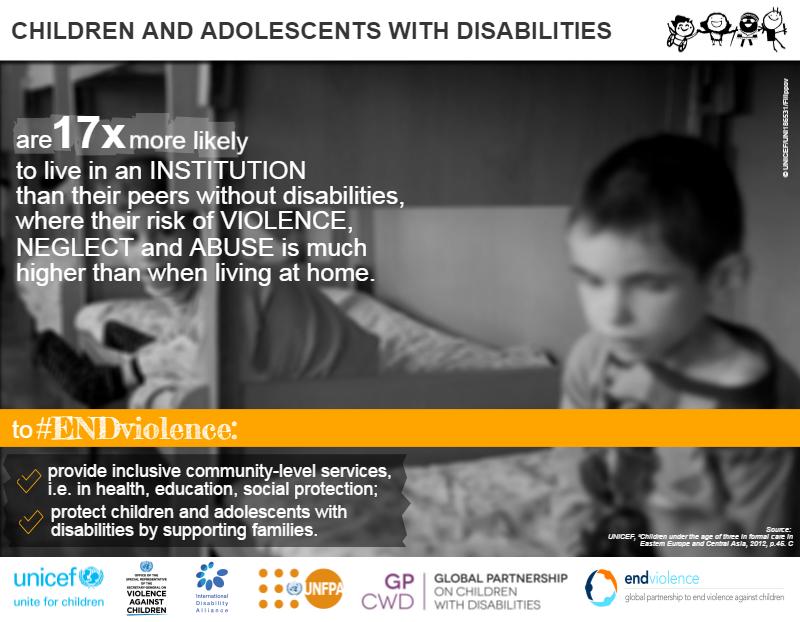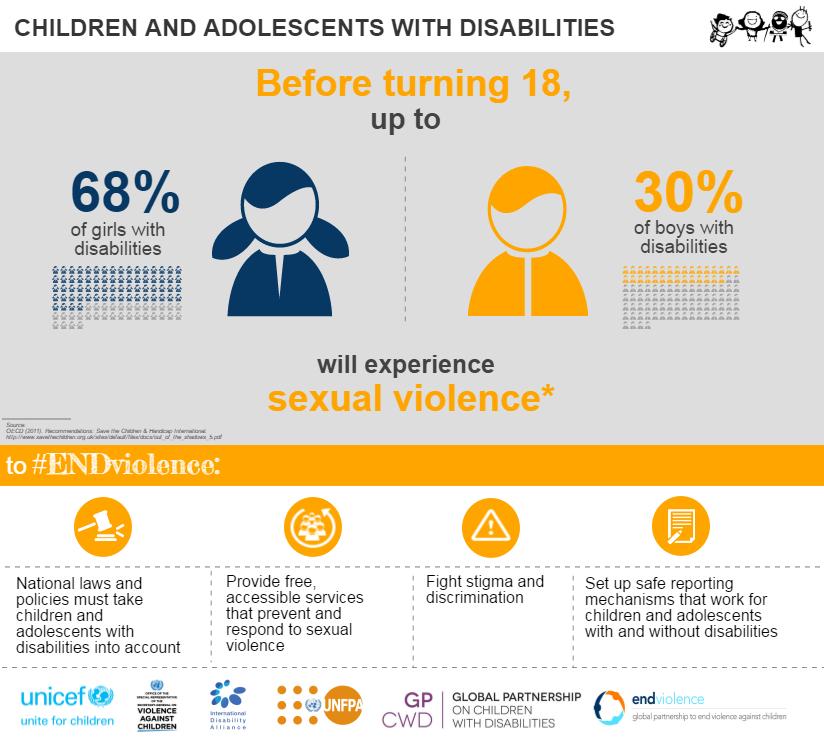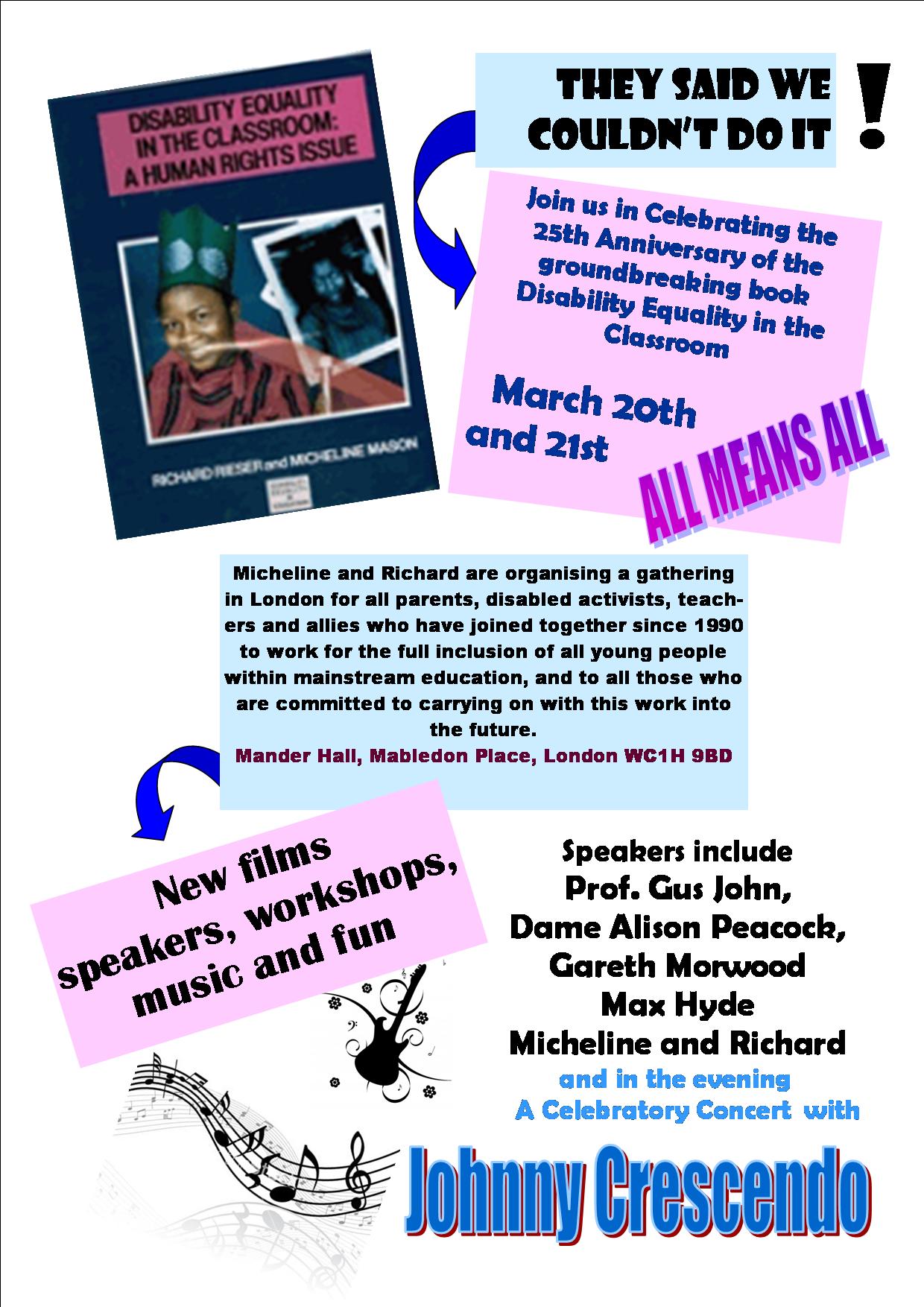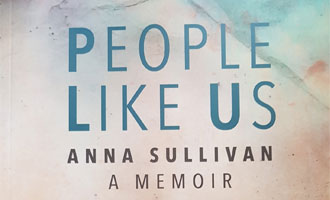Response to the Draft General Comment on Article 24 by the CRPD Committee from World of Inclusion Ltd
World of Inclusion is a training, resource producing and consultancy organisation that specialises in the implementation of inclusive education in the UK and many countries around the world. It is run by people with disabilities and is a DPO. International work includes Argentina, Botswana, Bhutan, Canada, Dubai, France, Germany, India, Italy, Kenya, Morocco, Mozambique, Papua New Guinea, Russia, Saudi Arabia, Senegal, Serbia, South Africa, South Korea, South Sudan, Swaziland, Uganda, Ukraine, Zambia and Zimbabwe (www.worldofinclusion.com)
World of Inclusion works from a principle of human rights and equality and strives to address intersectionality of differing equality strands. World of Inclusion works from the social model/human rights perspective and rejects a deficit/medical model approach. Therefore barriers to inclusive education are found in built environments, organisations, policies, practices and attitudes, though we recognise that people with disabilities need specific accommodations, supports and approaches to their impairment, within inclusive settings.
Having made a submission in writing and a verbal presentation to the Day of General Discussion on Article 24, World of Inclusion welcomes the Draft General Comment and the progressive direction they have taken. In particular we welcome :-
The ‘Right to Inclusive Education’ rather than just ’education’ in the title of the General Comment;
The clarity of the case for inclusive education based on a human rights approach and in particular the educational, social and economic case to be used when arguing with Governments; (Introduction p.1-7)
The definition of inclusive education; ( p.9)
The clear identification of barriers to inclusion; (p.9)
The defining of the right to inclusion as a ‘process that transforms culture, policy and practices in all educational environments’; (p.11)
The clear distinguishing between segregation, integration and inclusion; (p.11)
The recognition that placing students with disabilities in mainstream classrooms without appropriate support does not constitute inclusion; (p.11)
The prohibition of exclusion based on impairment or its degree; (p.18)
The recognition that denial of reasonable accommodation is discriminatory and immediately applicable; (p.137 p.40)
Support measures must be compliant with the goal of full inclusion; (p.33)
Education of all students must rest with the Education Ministry; (p.61)
The call for the transfer of resources from segregated to inclusive environments; (p. 63)
The recognition of the importance of families and representative organizations of people with disabilities; (p. 80)
The call for new assessment measures that will not disadvantage people with disabilities . (p.77)
However, World of Inclusion would respectfully like to put forward a number of amendments to the Draft General Comment (GC), based on our experience of working on developing inclusive education in many countries with different social, economic and cultural factors. Most of these amendments are offered to increase clarity and understanding. A few are new points World of Inclusion consider to be important but neglected. The GC will be a very important document to aid States, International Agencies, Non Governmental Organisations (NGOs), Disabled Persons’ Organisations ( DPOs), schools, colleges, school principals, teachers, administrators, families and young people with disabilities, to implement Article 24 and inclusive education.
Each amendment identified by paragraph number, has an explanation, is marked Amendment and the textual change is in red.
9. Definition of the right to inclusive education. The definition does not make it clear that inclusion should be available in local mainstream or regular schools, nor does it make clear that persons with disabilities should not be excluded by virtue of their impairment.
Amendment In 7th line, after ‘marginalized’, insert “ in local mainstream or regular schools and colleges from which persons with disabilities are not excluded by virtue of their impairment”.
In 11/12th lines, include in-depth transformation of the education system, ‘legislation, policy’ is listed. However, curriculum is not mentioned. In some countries, curriculum is subsumed in education policy. In others, the curriculum is seen as separate from policy.
Amendment in 12th line after ‘policy’, insert “and curriculum”.
10. This paragraph provides four ways to understand inclusive education. We are proposing a fifth, recognising it is also about geographic distribution of educational access, which is barrier free and providing for all students of relevant age range in the local area, with the necessary support.
Amendment add at end new point “e) An even geographic distribution of educational resources providing access to suitable, barrier free, environments for all students of relevant age range, in their local area, with the necessary support to thrive.”
12. This is a strong statement on the core features of inclusive education. In point b) Whole person approach- we think this would be clearer if reasonable accommodation was added here in line with 24.2.
Amendment In 6th line, after ‘identification’, insert “reasonable accommodations”.
Accessibility is a core element that should be added.
Amendment add a new point c) and re-letter, to read
“a) Accessible- environments, buildings, curricula, teaching methods, learning materials and ICT software and hardware should be made available as soon as possible”.
h) Recognition of partnerships. This sub paragraph does not mention partnership with peers. Work in many countries to develop peer support or child to child approaches has proved highly effective at breaking down attitudinal barriers, creating welcoming environments, challenging name calling and harassment and raising the self esteem of children with disabilities.
Amendment after first sentence ending in ‘disability’(4th line ) add
“Developing child to child or peer support, within and beyond school, to challenge harassment and develop self-esteem”.
New Paragraph. After 34. Insert new paragraph to cover the learning of life and social development skills. This is a vital part of developing effective inclusive education, especially for people with learning difficulties or psycho-social impairments but is useful for all people with disabilities. This is currently missing from the Draft General Comment.
Amendment After 34 insert new paragraph with subsequent renumbering.
“States Parties must commit to enabling persons with disabilities to learn life and social development skills to facilitate their full and equal participation in education and as members of the community. This is applies to all people with disabilities but particularly to students at all levels of the education system. It is particularly important for those with intellectual and psycho-social impairments, but all people with disabilities benefit from such a focus. The approach required is one of empowering persons with disabilities, within the human rights’ approach, to challenge disabling environments, attitudes and practices and equipping them with practical ways and solutions to minimise and eradicate such barriers. Such empowerment must include developing self esteem and an awareness of the history of the struggle for human rights of people with disabilities”.
35. Educating teachers for children with disabilities should be strengthened, to spell out a twin track approach and the need for disability equality/ disability awareness approaches delivered by people with disabilities, as to have the greatest impact on changing attitude. The third sentence needs qualifying to add clarity as in the proposed amendment.
Amendment In 9th line, after sentence ending in ‘abilities’ and before sentence starting ‘Provision’, insert
“There is considerable agreement that this should include a twin track approach to inclusion, examining the general parameters and practices of including all excluded groups. Secondly, a more detailed approach to the impairment specific needs, supports and accommodations necessary for students with the common range of impairments to be successfully included . An integral part of this training must be disability equality/disability awareness, which give all an appreciation of the paradigm shift from deficit/charity/medical model, to a social/human rights based approach, which lies at the heart of the Convention”.
36. It is important that increasing the number of teachers with disabilities has been stated. We consider this should also apply to many in-service teachers who develop an impairment during their career and are often forced out of teaching. Reasonable accommodations should be provided to retain their services. It is important to point out that to increase the number of pre-service teachers with disabilities, barriers need to be addressed in secondary and tertiary education, which would prevent them accessing teacher training. To cover these two points the following amendment is suggested.
Amendment In 4th line, after ‘teachers’ and before sentence beginning ‘Their’, insert
“These measures must also apply to retain in-service teachers who acquire impairments during the course of their careers. An important precursor of increasing the number of people with disabilities to be able to qualify as teachers is to remove barriers in secondary and tertiary education”.
39. World of Inclusion has major concerns about the inclusion of the underlined sentence below.
“Moreover, any deliberately retrogressive measures in that regard would require the most careful consideration and would need to be fully justified by reference to the totality of the rights provided for in the Convention and in the context of the full use of the maximum available resources”.
This can all too easily be treated as a ‘get out clause’. For example, this has occurred in the Republic of South Africa, where despite a national policy of inclusion, at the Province level there has been an increase in special school building. In Uganda, where despite a strong policy for inclusion, schools exclusively for blind and deaf students have recently been built, even though this will never meet need. The building of new segregated special schools and training in medical model based approaches rather that human rights based approaches to disability are two most common.
Amendment In 9th to 12th line, ‘deletion of the underlined part’. Or in 9th to 12th line, delete underlined wording and insert in their place ‘Deliberate retrogressive measures can never be justified in the context of the Convention and human rights framework.’
New Paragraph. Out of school children. At least 40% of out of school children have been shown to be children with disabilities. As the proportion attending school increases, the proportion of those outside school who are children with disabilities increases. Add to this the higher drop-out rate of children with disabilities, as they meet barriers in school and their communities to their successful continuation with their schooling and it can be seen why we are proposing the insertion of a New Paragraph after 40 as part of State Party Obligations.
Amendment After 40 insert New Paragraph and renumber
“State parties need to take urgent action to ensure the implementation of the many international treaty obligations which require all children to be entitled to education. Children with disabilities, particularly girls, are the largest group of out of school children . Many children with disabilities drop-out of school due to barriers in school and in their communities. State Parties must address this situation. State parties in their reporting and data collection need to identify the numbers and location of out of school children, the type of impairments they have and the measures they are taking to get them into school or re-enter education, in the most inclusive way possible”.
45. The use of the word vulnerabilities (6th line) places the focus back on the child as a subject and takes us to a charity/medical model approach, contrary to the human rights’ model approach upon which the UNCRPD is based.
Amendment In 7th line, delete “any particular vulnerability” and replace with “ any particular barriers”.
47. Article 8. Awareness Raising. It has been shown that involving people with disabilities in disability equality / disability awareness has proved highly effective in challenging negative attitudes and promoting a positive approach, especially in the education system.
Amendment At end of paragraph add “Involving adults with disabilities and their representative organisations, DPOs, has been demonstrated to be an effective strategy ”.
58. Article 32. International Cooperation. This does mention the SDGs and Agenda 30, but this paragraph would benefit by emphasising the particular wording of SDG 4 on inclusive education.
Amendment At end of paragraph add
“SDG 4 is of particular importance to ‘Ensure inclusive and equitable quality education and promote lifelong learning opportunities for all’ and in particular target 4.5 and point 4a ”.
63. A comprehensive and co-ordinated legislative framework for inclusive education needs to be introduced, together with a clear time frame for implementation. World of Inclusion accepts all the points in this paragraph but we consider there needs to be more emphasis on ensuring people with disabilities and their representative organisations have a right to be involved in developing the inclusive education system. Adults with disabilities are grown up children with disabilitie and their experience has a vital part to play in developing inclusive education.
Amendment. In point k), 3rd line, after “disabilities” add “and their representative organizations- disabled persons’ organizations (DPOs)”.
64. Support the need for an Education Sector Plan. This will be as strong as the data it is based upon. To the list recommended by the Committee should be added data on the numbers in special schools/segregated settings; the number of teachers trained and to what level; how many have received training on including children with disabilities and to what level.
Amendment In 7th line, after “school” add
“numbers in educational segregated settings, the number of teachers trained and to what level, how many have received training on including children with disabilities and to what level”.
66. Deinstitutionalisation is a vital part of creating more inclusive societies. This should apply to segregated schools as well as other institutions. From these closures, State Parties should be required to ring fence any savings to be put into community services.
Amendment In 7th line, after “residential institutions” insert “and segregated schools”
Add new sentence at end of paragraph “ State Parties should ensure that any savings made from the closure of institutions are put back into community services and ring –fenced, over a sufficient time period to be effective”.
67. Early Childhood interventions are a vital part of developing the capacity of children with disabilities to be successfully included and creating positive attitudes among their families and community. The World Health Organisation support for inclusive Community Based Rehabilitation should be referenced.
Amendment In 6th line, after “children with disabilities.” add
“This should be approached from an inclusive orientation, as has been pioneered in many countries by Community Based Rehabilitation ”.
Amendment In 9th line, after “NGO “ insert “/DPO”
72. The training of teachers must include principals, all in-service teaching and support staff and be on-going, as inclusion is a continuing process.
Amendment At end of paragraph add a new sentence
“Such measures must include principals, all in-service teaching and support staff, be provided on a whole school basis and be ongoing, as inclusion is a continuing process”.
73. There are different models for implementing inclusive education. The four options put forward do not include one where schools across a district collaborate with one another, for example, through school and district support groups and/or share a resource centre for training, IT, teaching and learning accommodations, as in South Africa.
Amendment Add a new a) and re-letter subsequent sub-paragraphs
“ a) A district approach, in which there are district level inclusion coordinators, who train and support principals and an inclusion lead teacher from every school, followed by setting up a school- based support group of interested parents, teachers, DPOs and community representatives, who identify out of school children and children with disabilities and the barriers they face. Each school- based support group regularly sends a representative to the district support group. A district resource centre is established to provide support, training, teaching and learning resources, collecting data and monitoring effectiveness and developing interventions”.
75. This is an important paragraph giving a clear steer to the type of pedagogical changes necessary to make inclusion work. However, it needs clarifying by adding type and degree of impairment. The words ‘unique’ and ‘abilities’ are patronising and inaccurate.
Amendment In 10th line, after ‘‘learning style’’ insert “impairments”
Amendment In 12th line, delete “their unique abilities” and replace with “their diverse types and degree of impairment”.
Richard Rieser , World of Inclusion Tel 0044(0)7715420727 or e-mail rlrieser@gmail.com 04.012016
i UNICEF 2013 Preparing Teachers for Children with Disabilities (http://worldofinclusion.com/unicef-project-educating-teachers-for-children-with-disabilities/) and IDDC Teachers for All : Inclusive Teaching for Children with Disabilities http://iddcconsortium.net/sites/default/files/resources-tools/files/iddc_paper-teachers_for_all-print_version.pdf
ii Include Us(2013) Plan International. https://plan-international.org/include-us#download-options Children with disabilities in 30 countries 10x less likely to be in school than children with disabilities
iii Commonwealth Secretariat (2012) “ Implementing Inclusive Education: Implementing Article 24 of the UNCRPD Author R.Rieser. Published London. http://worldofinclusion.com/v3/wp-content/uploads/2014/01/Implementing-Inclusive-Education-promo-copy1.pdf
iv United Nations Sustainable Development Goals (2015) https://sustainabledevelopment.un.org/
v WHO(2010) Community Based Rehabilitation Guidelines http://www.who.int/disabilities/cbr/guidelines/
Category: Blog
